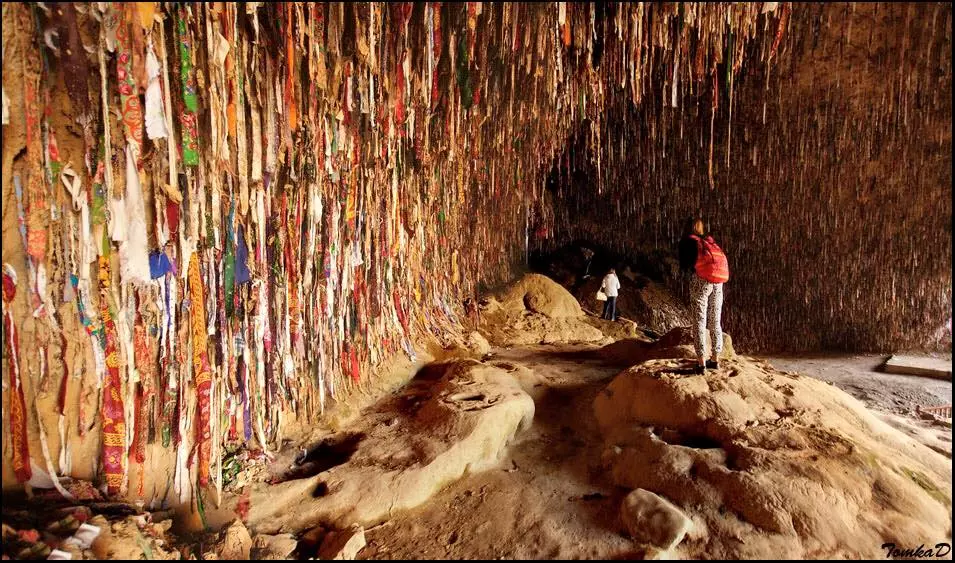The Koytendag Reserve is located in the Lebap velayat and is part of the Ministry of Environmental Protection of Turkmenistan. Koytendag also calls themselves “charismatics.” Arriving in Koytendaga, you can see the highest point of the country, Airibaba – 3139 meters. One of the most beautiful features of Koytendag is its narrow valleys and long rocky streams. There are several streams in Koytendag, such as “Umbar Dere”, “Darayy Dere”, “Kyrgyzy Dere”, “Bulak Dere”, “Khojagaravul Dere”. Among these rivers, the Valley of the Gorge stands out for its beauty and unique shape. It is 18 miles long, 15 to 20 feet wide, and much wider in some places, and is made up of steep cliffs on either side. The stream is a source of moisture and cools the surrounding area in the summer. On either side of the creek that flows from “Creek Gorge,” the creek is dotted with forest. The forest rests on steep cliffs, where eagles, wolves and other birds nest. Another attraction that has made Koytendak famous all over the world is the high plain where dinosaur footprints have been found. Scientists believe that the footprints belong to prehistoric dinosaurs. About 2500 dinosaur footprints can be found here on a spaceship 400 and 300 meters long. Nowhere else in the world have so many dinosaur footprints been found. Megalosaurus passed 26 tracks, with a maximum length of 195 meters, 226 meters, 266 meters and a length of 311 meters, which is a “world record”. Megalosaurus is the largest footprint found and is associated with the Ururian period. All this evidence indicates that the dinosaur plateau in Turkmenistan is unique and that there are no similarities between the two planets. In addition, there are footprints of humanoid creatures on the plateau, which correspond to the scale of 43 shoes. Scientists have described the formation of the dinosaur plateau as follows: About 145-150 million years ago, at the end of the Ururian period, there was a flat lagoon base where large dinosaurs roamed. In an instant, the water receded, and the old base dried up and turned into solid rock. For millions of years, geological processes have caused tectonic plates to collide, forming the Earth’s faults. The plate, which was once horizontal, was bent to its current height. A few million years later, the softer rocks were washed away by water and wind, revealing dinosaur footprints. Currently, work is underway to preserve and study these amazing and scientifically valuable traces. When it comes to Koytendag, Lake Koytendag is not mentioned. The stagnant lake near the village of Koyten is one of the deepest in the country. The diversity of Koytendagh’s flora also attracts the attention of the world’s wildlife. Arnap trees, located near the village of Koyten, are the only trees in the country. The Arnap tree is also known under other names – unabi, chilan (needle).
The scientific encyclopedia “Turkmen Medicinal Cakes” of the national leader of the Turkmen people Gakhryman Arkadag provides accurate information about the medicinal properties of the “Arnap tree”. More than 930 species of plants grow in Koytendag, 10 percent of which are found only in these areas. Many of them are also known as medicinal plants. Year-round green juniper is one of the main decorations of Koytendag. As for the Koytendag Zoo, it is home to more than 40 species of mammals. Among them is a horned mountain goat called mahrour. Mahrour is unique in that it is found only in these places. It is adapted to live at an altitude of 1500 to 2500 meters above sea level. These animals, which make wonderful movements on the rocks, are under strict protection from the reserve. In Kuitendag, there are dozens of flower varieties that symbolize beauty. There are 8 varieties of 16 flowers, known as the flower of happiness. It is one of the most beautiful and rare species of flowers, growing at an altitude of 700 to 3000 meters above sea level. Koytendag Nature Reserve is a major enterprise in the field of nature conservation and scientific research to preserve the natural beauty and beauty of Koytendag.

